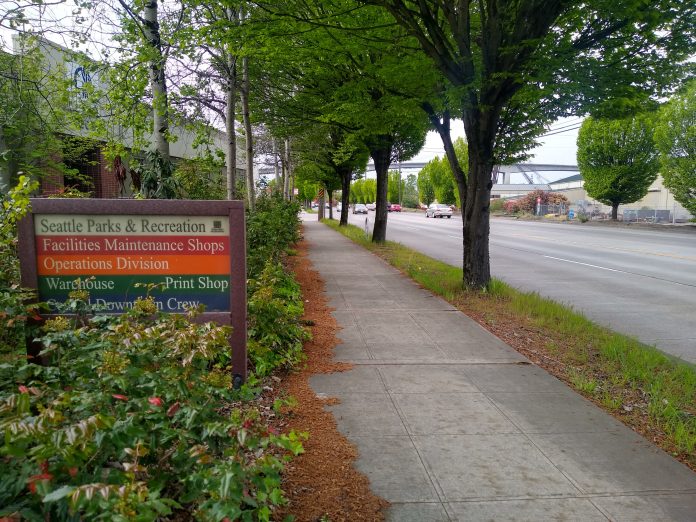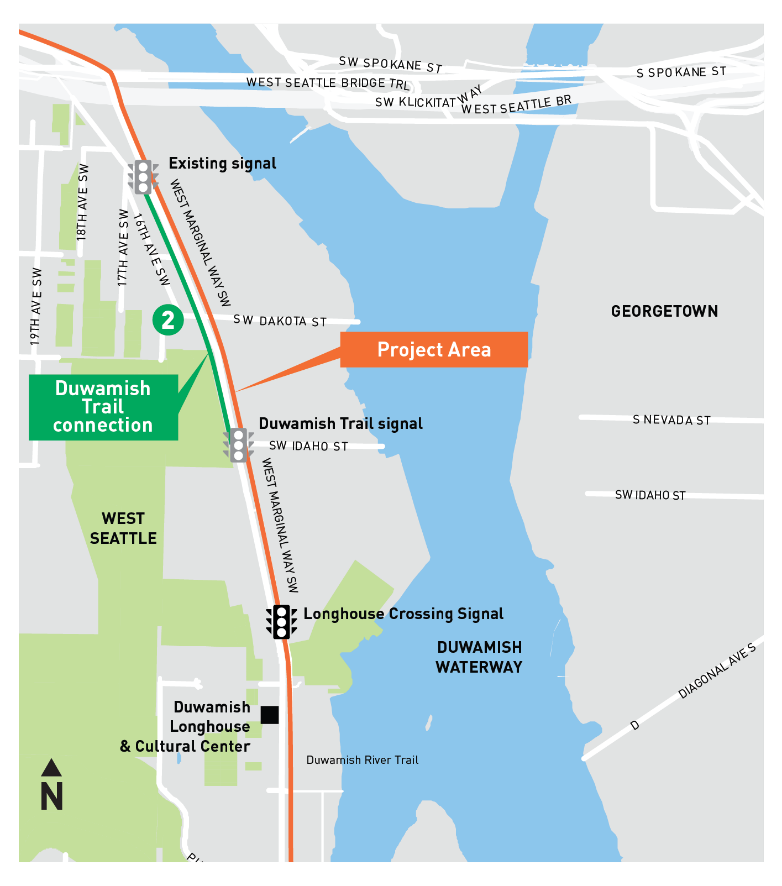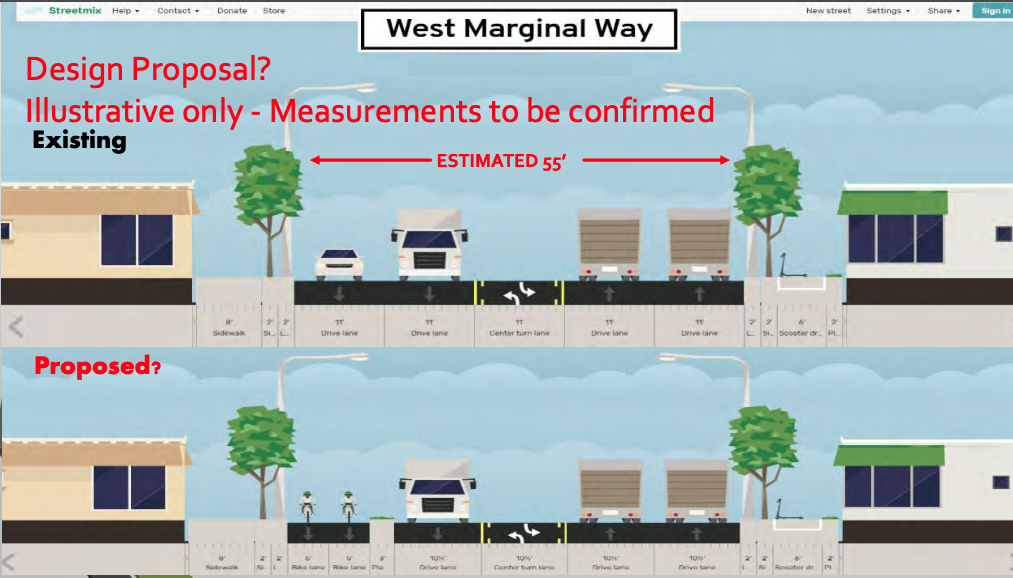
The Seattle Freight Advisory Board devoted a significant portion of their April meeting detailing reasons that the City should not install a protected bike lane on a short segment of West Marginal Way SW. The presentation shown to board members was not reviewed by the Seattle Department of Transportation (SDOT) for accuracy, according to a department spokesperson.
While a link to the virtual meeting was available on a City website, an agenda for the meeting was not, providing no way for members of the public to even be aware that it was being discussed. The Freight Advisory Board has also not posted the minutes from one of its meetings since last last July, so who knows when the fact that it had even been talked about would be available as a matter of public record.
The short segment of protected bike lane is being considered by SDOT as part of the larger Reconnect West Seattle program, which is geared around calming traffic and improving mobility during the closure of the West Seattle high bridge. It would run less than a half mile between West Marginal Place SW (near the 5-way intersection at the west end of the West Seattle Bridge) and just north of the Duwamish tribe’s Longhouse. At that spot, southbound traffic is already reduced to one lane to improve safety conditions for people trying to cross at an unmarked intersection to get between the Longhouse and the parking lot across the street, frequently used during events. Later this year, SDOT will be installing a crossing signal at the Longhouse, but sightline issues will remain an issue for southbound traffic coming around the curve and there are currently no plans to add a second traffic lane back in.

In November, the Freight Advisory Board wrote a letter to Seattle’s Deputy Mayor in charge of transportation, Shefali Ranganathan (who has since left her job), asking that West Marginal Way be “restored as a five-lane facility” due to its status as a “Major Truck Street” — a designation that comes from Seattle’s Freight Master Plan. Converting the entire street back to five lanes would mean removal of the safety project at the Longhouse in addition to precluding the option of installing the protected bike lane north of there.
At the April meeting, one slide shown to the board included a mockup of the street from the website Streetmix, which is a free software program that allows you to create street design cross-sections. Marked “measurements to be confirmed,” it included a cross section of the existing street, with all lanes shown as 11 feet wide, and one showing a street with the proposed bike lane, with the other four travel lanes reduced to ten-and-a-half feet. Board members discussed potential negative impacts of freight lanes being that narrow. These assumptions were based on the SDOT right-of-way improvements manual, but they were not verified by SDOT. Asked about the lane widths, SDOT’s Mariam Ali confirmed the slide was not accurate: “The general travel lanes will be 11’ minimum to accommodate freight vehicles. The design team is still reviewing the cross section and has not finalized all of the lane widths.”

Of the presentation in general, Ali told us that “[t]he Freight Advisory Board created this slidedeck as a way to facilitate a conversation in which they shared questions and concerns about West Marginal Way. SDOT staff was not asked to review the slidedeck in advance as their intention was to express their perspective at the meeting.”
During the discussion amongst the Freight Advisory Board members, the project was compared with the Burke Gilman Missing Link project. That project is still working its way through litigation despite the fact that the City has since passed legislation exempting projects like it from full State Environmental Policy Act (SEPA) review. Board Member John Persak, who also sits on the West Seattle Bridge Community Taskforce, suggested that the West Marginal protected bike lane should be subjected to an Environmental Impact Statement under SEPA anyway due to its impact on a major freight route.
SDOT held an open house for the project in February, with supporters and opponents showing up to have their say on the project in fairly equal measure. One person who spoke in favor of the bike lane proposal was Andrew G, who said he works at the Duwamish Longhouse. “I bike along this exact stretch every day, and it’s incredibly dangerous…For those who are saying wait till another time, this is the most dangerous West Marginal Way has ever been for people who go to the Longhouse, who work there, especially Duwamish tribal members. This is the most dangerous time because of the traffic increase,” he said.
A decision on whether the bike lane would be installed this year was expected already, but SDOT says the timeline for a decision is “still to be determined.” In March, Heather Marx, leading the entire West Seattle Bridge project at SDOT, told the West Seattle Transportation Coalition that the question is not whether the city will install the bike lane at all but whether it will wait until the West Seattle high bridge reopens. This suggests that what the Freight Advisory Board is pushing for isn’t currently on the table, but at their April meeting the board made clear that they were trying to schedule a meeting with SDOT Director Sam Zimbabwe to discuss the project. It’s unclear if members of the bicycle advisory board, who are predictably much more supportive of the project, would be invited to such a meeting as well. With the Freight Board skirting public meeting laws, they might not have known about it at all.
Ryan Packer has been writing for The Urbanist since 2015, and currently reports full-time as Contributing Editor. Their beats are transportation, land use, public space, traffic safety, and obscure community meetings. Packer has also reported for other regional outlets including BikePortland, Seattle Met, and PubliCola. They live in the Capitol Hill neighborhood of Seattle.

